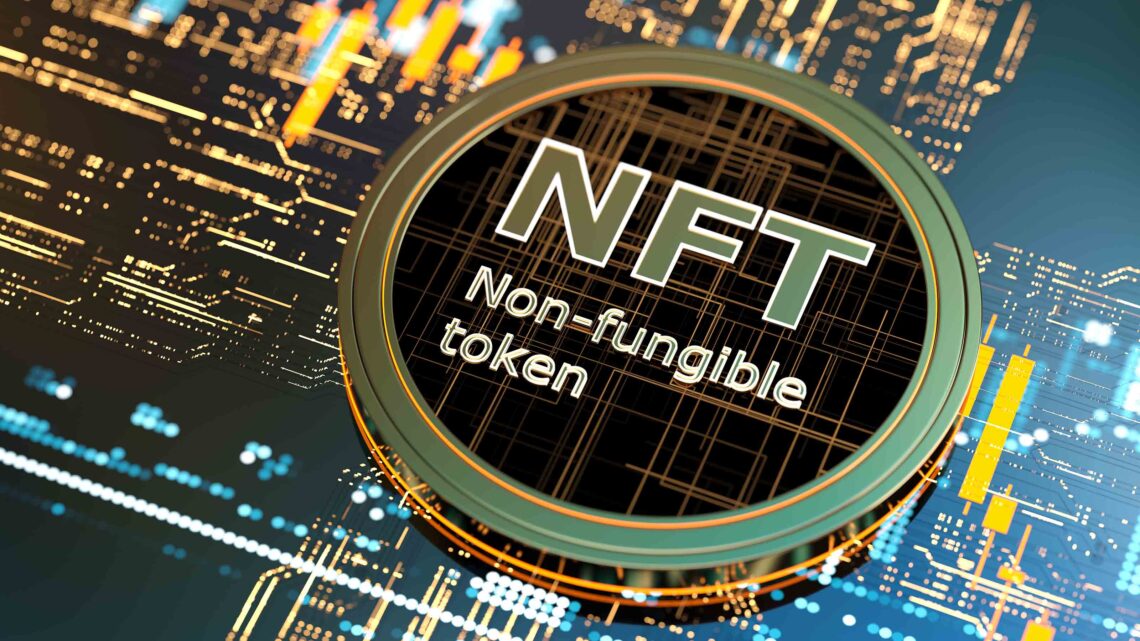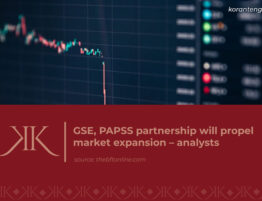
Written by Ama Koguah Obese-Jecty
The writer is a lawyer and an Associate of Koranteng & Koranteng Legal Advisors and focuses on intellectual property, technology and commercial law
NFTs
Fungible refers to anything that can be replaced by a similar item or that is mutually interchangeable with something else. For example, money is a fungible asset. One dollar can be easily replaced with another and the value remains the same.
Non–Fungible, therefore, means a thing that is unique, which cannot be interchanged or replaced with something else. Thus, Non-Fungible Tokens (NFTs) are a one-of-a-kind digital asset, that can be bought and sold like any other piece of property. They can take the form of anything digital including music, drawings, animated GIFS etc. and can also represent real world physical assets.
NFTs allow you to keep track of who owns what by storing these records on a shared ledger known as the blockchain. By allowing you to verify who owns them, NFTs can be thought of as certificates of ownership of both digital and real assets such as the deed to a car, legal documents or the tickets to an event.
When someone wants to create an NFT, they ‘mint’ it on a blockchain, which allows all other people on the blockchain network to recognize its creation and view its ownership. Most NFTs are part of the Ethereum cryptocurrency blockchain but other blockchains can implement their own versions of NFTs. The use of blockchain technology is at the heart of NFTs many advantages.
Blockchain Based Advantages
The advantages of NFT’s include increased transparency and security. It is nearly impossible to change, hack or fake records of transactions involving NFTs because of the use of Majority Confirmation, the Hash and the Proof of Work mechanism, among other things.
Majority Confirmation refers to the fact that a blockchain is a distributed ledger that is completely open to anyone. The ledger of transactions is duplicated and distributed across the thousands of computers on the network. A new block/ record cannot be created until every node has checked the validity of the transaction and the majority have declared it valid. Any change/ tampering with the contents of the block can be detected and blocks that have been tampered with will be rejected by the computers on the network.
Each block contains data, a Hash and the Hash of a previous block. The Hash is unique, acting as a “fingerprint” that identifies a block and all of its content. Hashes therefore help you detect any change in a block on the chain because changing something inside the block will cause its Hash to change. Moreover, changing a single block will make all the following blocks invalid because the Hash of the preceding block will be ‘wrong’.
In addition, a ‘Proof of Work Mechanism’, usually involving computers solving complex math puzzles, increases the difficulty level of generating new Hashes and slows down the creation of new blocks such that one is produced about every ten minutes. This makes it even harder to tamper with the block, because the proof of work will have to be recalculated not only for that block but for all the following blocks in the chain as well.
The moment one block is changed therefore, it becomes apparent that it has been tampered with. Hackers wanting to tamper with the blockchain system would therefore have to change every block on the chain across all the distributed chains, redo the proof of work, and take control of more than 50% of the peer to peer network before the tampered block will be accepted. This is almost impossible to do.
Its Usage
Artwork
Currently, NFTs are being used to buy, sell and trade digital art, forming a multi-million-dollar industry that only keeps growing. Perhaps you have heard of the iconic GIF of a Nyan cat being sold for $580,000 or the 1st tweet by Twitter’s founder Jack Dorsey being sold for around $3,000,000.
There are now a number of digital marketplaces including Zora, SuperRare, and Nifty Gateway — where collectors can buy and sell digital works. The platform, NBA Topshot, allows users to buy and trade NFTs in the form of videoclip highlights of basketball games. Further, auction houses such as Christie’s, which have in the past sold iconic portraits such as the portrait of Shakespeare and the last known painting of Leonardo di Caprio, are auctioning NFTs. On March 11 2021 Mike Winkelmann, an artist known as Beeple, had a picture (composed of 5000 digital pieces) auctioned at Christie’s for $69 million (Everyday’s the First 5000 days.) In addition, Beeple’s 10 second video “Cross Roads” originally sold for $67,000 in October 2020 and resold for $6.6million in February 2021.
NFTs could have many other uses in mainstream commerce.
Global Trade
In global trade, where the consignee must present a bill of lading to the shipper, indicating that the consignee does in fact own the goods and the shipper can transfer them into his possession, “Tokenisation” of the bill of lading would bring speed and efficiency to the process by allowing that same ownership to be verified in a decentralised manner and avoid delays caused by multiple actors and slow mail services. It would also help to reduce the cost of delivery and to avoid demurrage charges from late pick-up of goods at the port.
Oumi Blockchain Technology outlined its plans to apply NFTs to the digitisation of invoices for functions such as factoring, which involves a business selling its accounts receivable to a third party at a discount, to obtain immediate money for amounts due on accounts receivables or business invoices.
Real Estate
Real estate agents can also employ NFTs by issuing listings as NFTs with fractional ownership of assets. This allows multiple buyers to have a stake in a single property according to specific conditions.
Collateral
With valuable assets like cars and property representable on Ethereum, you can use NFTs as collateral in decentralized loans. This is particularly helpful if you are not cash or crypto-rich but own physical items of value.
Further Advantages
Generally, “tokenising” trade documents brings to the table a single source of truth, multiparty automation, fraud reduction, greater transparency and trust – as well as removing cumbersome paper-based processes from the equation.
In addition, the fact that NFTs are a distributed ledger means there is no need for a central authority and that avoids the weaknesses that come with it, including the risk of bribes and corruption.
The blockchain also helps prove ownership and authenticity of the NFT by providing a full ownership history from when the NFT was minted. The authenticity of the NFT is secured on the blockchain and allows one to surpass less efficient, paper-intensive authentication methods.
NFTs also have the advantage of easy transferability from one person to another, worldwide, helping to ensure a higher pool of potential buyers. The fact that the code and meta data of an NFT cannot be changed lends it permanence and immutability.
The ability of NFTs to generate revenue or be exchanged for real world assets also presents a significant advantage.
NFTs that represent physical assets can help make those physical assets more accessible to a wider audience. With NFTs, physical assets can be easily traded on digital marketplaces, which can increase their exposure and make them more attractive to buyers. The security of transactions on the blockchain can also help bring added confidence to ownership transfers as transactions on the blockchain are transparent and verifiable.
In addition, NFTs employ smart contracts, a digital code for the transferring of assets from one person to another that exists on the blockchain. Smart contracts are automated contracts; when defined pre-conditions are met, the contract moves onto the next step. By the time all payments are made, property automatically transfers without the need for an intermediary.
Moreover, within the art industry, NFTs allow artists to directly profit from all sales of the NFT, taking into consideration even the appreciating value of the NFT. This means that a piece of art that originally sold for $10 before rocketing to $1million for the next sale would make its creator money based on its new value, rather than just the original $10. NFT royalty payments are both perpetual and automatic, so creators can just sit back and earn royalties as their work is sold from person to person.
Though NFTs have many advantages, there are also some disadvantages to their use that should be kept in mind.
Disadvantages
There is a concern that NFTs are not eco-friendly because the blockchain that NFTs are created on consumes huge amounts of energy. For example, each NFT transaction on the Ethereum network consumes the equivalent of the daily energy used by two American households and millions of transactions take place each year.
Finding solutions for the proof of work mechanism which provides security for most of today’s NFT networks requires a lot of computational power which in turn drives electricity consumption. It should be noted however that Ethereum has plans to change its proof-of-work algorithm to an energy efficient proof-of-stake algorithm called Casper. The Casper Protocol’s implementation will upgrade Ethereum to version 2.0 (aka ETH 2.0), making Ethereum faster, more efficient and more scalable.
Richard Crook, director of financial services software company LAB577 and former head of emerging technology at the Royal Bank of Scotland (RBS), noted in 2021 that there are many better ways [than proof of work] of ordering transactions. “One of the ways we do that is by creating trusted nodes on a network to validate them. A good example of that is Corda. There are already technology choices out there that you could use to do NFTs that will not result in this huge electricity footprint. I don’t doubt that if you issue an NFT on Ethereum that there is an outsized environmental impact, however that is not where we are going to end up over five or 10 years.”
Amy Fisher, former Head of Business Development at R3, the blockchain firm behind Corda, explained that Corda’s peer-to-peer architecture means it only involves parties to the transaction, as opposed to the entire network, as is the case with public blockchains like Ethereum. “This avoids the high time and computing resources that public blockchain consensus requires, which serves as a serious impediment to scalability, not to mention wasted resources,” she said.
Another disadvantage to be noted is that NFT trading requires a digital wallet that can hold them and these wallets can be hacked, so it is important to ensure there are plenty of defence mechanisms in place.
Despite these disadvantages, NFTs have become a worldwide phenomenon whose popularity continues to grow as our understanding of them increases.
Richard Crook has stated, “Everything from the provenance of goods, fraud prevention and even debt management can be streamlined and verified using blockchain-based NFTs.”
A look towards the future








